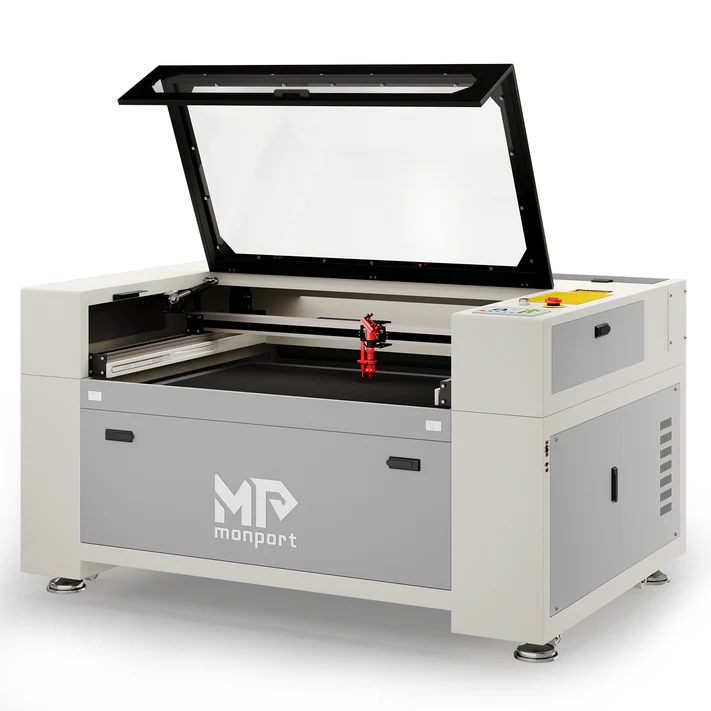The Future of Manufacturing: Exploring the Power of Laser Cutter Machines

In the ever-evolving world of manufacturing, laser cutter machines stand out as a game-changing technology. Their ability to deliver precise, high-quality cuts has revolutionized how various industries approach production. From small-scale artisans to large industrial manufacturers, the integration of laser cutting technology has opened new avenues for creativity, efficiency, and cost-effectiveness. This article delves into the advanced capabilities of laser engraving, their wide range of applications, and how they are shaping the future of manufacturing.
The Evolution of Laser Cutting Technology
Early Beginnings
Laser cutting technology has come a long way since its inception. Initially developed in the 1960s, the first laser cutter machines were large, cumbersome, and primarily used in research labs. However, as technology advanced, these machines became more compact, efficient, and affordable, making them accessible to a broader range of industries.
Modern Advancements
Today’s laser cutter machines are equipped with sophisticated software, high-powered lasers, and precision controls. These advancements have significantly improved the accuracy, speed, and versatility of laser cutting, making it possible to cut complex shapes and patterns with ease. Additionally, the development of fiber lasers and other specialized laser types has expanded the range of materials that can be processed, from metals and plastics to ceramics and composites.
Key Features of Laser Cutter Machines
-
Unmatched Precision
The hallmark of any laser cutter machine is its precision. Laser beams are incredibly narrow, often just a fraction of a millimeter in diameter, allowing for cuts that are virtually impossible with traditional cutting tools. This level of precision is particularly important in industries like aerospace and medical device manufacturing, where even the slightest deviation can have serious consequences.
-
Speed and Efficiency
Laser cutter machines are known for their high-speed operation. Unlike mechanical cutting tools that rely on physical contact with the material, lasers cut by focusing a beam of light on the surface, resulting in faster cutting speeds. This efficiency is further enhanced by the ability of modern machines to automate the cutting process, reducing the need for manual intervention and increasing overall productivity.
-
Versatility Across Materials
One of the most significant advantages of laser cutter machines is their versatility. These machines can cut a wide range of materials, including metals, plastics, glass, wood, and textiles. This versatility makes laser cutters invaluable in industries as diverse as automotive manufacturing, fashion design, and electronics.
-
Non-Contact Cutting
Laser cutting is a non-contact process, meaning that the laser beam does not physically touch the material being cut. This eliminates the risk of material deformation, a common issue with traditional cutting methods. Non-contact cutting also reduces wear and tear on the machine, leading to lower maintenance costs and longer machine life.
-
Clean and Precise Edges
Laser cutting produces clean, precise edges with minimal burrs or roughness. This eliminates the need for additional finishing processes, saving both time and money. The high-quality edges produced by laser cutting are particularly important in industries where aesthetics and surface finish are critical, such as jewelry making and architectural design.
Applications of Laser Cutter Machines in Modern Industries
-
Automotive Industry
In the automotive industry, laser cutter machines are used to produce complex parts with high precision. From cutting sheet metal for body panels to engraving intricate designs on interior components, laser cutters play a crucial role in modern automotive manufacturing. The ability to cut lightweight materials like aluminum and composites has also enabled automakers to reduce vehicle weight, improving fuel efficiency.
-
Electronics and Semiconductors
The electronics industry relies heavily on laser cutting for the production of circuit boards, microchips, and other delicate components. The precision of laser cutting is essential for creating the tiny pathways and connections required in electronic devices. Additionally, laser cutters are used to cut and shape the enclosures and housings that protect electronic components.
-
Aerospace and Defense
The aerospace and defense industries demand the highest levels of precision and quality, making laser cutter machines a critical tool in the production of aircraft components, missile parts, and other specialized equipment. Laser cutting’s ability to produce complex geometries and cut through tough materials like titanium and Inconel makes it ideal for these applications.
-
Medical Devices
In the medical field, laser cutter machines are used to produce a wide range of devices, from surgical instruments to implantable components. The precision and cleanliness of laser cutting are essential for meeting the stringent quality standards required in medical device manufacturing. Laser cutters are also used to create intricate patterns and textures on medical devices, enhancing their functionality and performance.
-
Fashion and Textiles
The fashion industry has embraced laser cutting as a means of creating intricate patterns and designs on fabrics. From cutting lace to engraving patterns on leather, laser cutters enable designers to experiment with new textures and materials. The speed and precision of laser cutting also make it ideal for mass-producing garments and accessories, helping fashion brands meet the demands of a fast-paced industry.
Choosing the Right Laser Cutter Machine for Your Needs
-
Assessing Material Compatibility
When selecting a laser cutter machine, the first consideration should be the materials you plan to work with. Different lasers are optimized for different materials, so it’s essential to choose a machine that can handle the specific types of materials you’ll be cutting.
-
Evaluating Power and Speed
The power of the laser is a crucial factor in determining the machine’s cutting capabilities. Higher-powered lasers can cut through thicker and tougher materials, while lower-powered lasers are better suited for delicate work. Additionally, the speed of the machine should align with your production needs. Faster machines are ideal for high-volume production, while slower machines may be sufficient for smaller-scale operations.
-
Considering Work Area Size
The size of the machine’s work area should match the size of the materials you plan to cut. If you work with large sheets of material, you’ll need a machine with a spacious work area. Conversely, if you work with smaller pieces, a machine with a more compact work area may be more practical.
-
Software Integration
Modern laser cutter machines are equipped with sophisticated software that controls the cutting process. It’s important to choose a machine that is compatible with your design software and offers user-friendly features. Some machines come with built-in design software, while others allow for integration with popular CAD programs.
-
Budget Considerations
Laser cutter machines vary widely in price, depending on their power, size, and features. It’s important to establish a budget and choose a machine that offers the best value for your money. While it may be tempting to opt for a lower-cost machine, it’s important to consider the long-term benefits of investing in a high-quality machine that meets your specific needs.
The Future of Laser Cutter Machines
-
Advances in Laser Technology
As laser technology continues to evolve, we can expect to see even more powerful and efficient laser cutter machines. Future advancements may include the development of new laser sources, such as ultra-short pulse lasers, which offer even greater precision and control.
-
Integration with Automation and AI
The integration of laser cutter machines with automation and artificial intelligence (AI) is already underway. These technologies can further enhance the efficiency and accuracy of laser cutting, enabling machines to automatically adjust cutting parameters based on material properties, detect and correct errors in real time, and optimize cutting paths for maximum speed and efficiency.
-
Expanded Applications
As laser cutter machines become more versatile and capable, their applications are likely to expand into new industries and fields. From advanced medical devices to innovative fashion designs, the possibilities for laser cutting are virtually limitless.
Conclusion
Laser cutter machines are transforming the manufacturing landscape, offering unprecedented precision, speed, and versatility. As these machines continue to evolve, they will play an increasingly important role in shaping the future of manufacturing across a wide range of industries. Whether you’re in automotive, electronics, aerospace, or fashion, investing in the right laser cutter machine can give you a competitive edge and unlock new possibilities for innovation and creativity.




